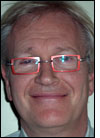Belgian health-care provider GasthuisZusters Antwerpen (GZA) is tracking the temperatures of its refrigerators and freezers that store pharmaceuticals, tissues, blood and food across its three hospitals in Antwerp, using a Wi-Fi based system provided by AeroScout. With approximately 250 tags currently in place, the deployment is the largest such system in Europe, says Wim Verduyn, AeroScout’s director for the Benelux and France regions.
The hospitals—Sint-Augustinus, Sint-Jozef and Sint-Vincentius—each have a combination of coolers and refrigerators that store everything from blood and plasma to high-value pharmaceuticals and food for employees and patients. With the system installed by integrator PHI DATA, each unit’s temperature is transmitted to GZA’s back-end system using its existing Wi-Fi nodes.
Based on the success of the cooler system, which went live in March 2010, GZA has now begun providing RFID tags for 40 staff members, to help track their locations and respond to an emergency alert if a worker or a patient requires assistance. The hospital is now in the process of installing the staff-tracking feature.
Initially, GZA sought a solution to help track the temperatures of its cooling units. In the past, the hospital had accomplished temperature tracking via its building-management infrastructure. “This was a cabled system, and was quite cumbersome when it came down to registration and configuration,” says Piet Van Wijnsberghe, GZA’s preventive maintenance coordinator, “so we were looking for a new system.”
Discussions about finding a technology solution began in September 2009, Verduyn recalls. “The vision was to use one system for the entire group—all three campuses at once,” he says. To that end, the health-care company researched several possible solutions.
“The AeroScout system was the most interesting, because of the fact we already had a Wi-Fi network,” Van Wijnsberghe says. “All the other systems had a network of their own, which made them considerably more expensive.” AeroScout’s MobileView software platform, which provides graphical maps, analytical tools and alerting, could also accommodate other future functions if the hospital chose to use them, including tracking staff members or patients.
For each refrigeration unit, an AeroScout T5 sensor tag transmits a 2.4 GHz signal encoded with a unique ID number, along with the latest temperature data, to the network of Aruba Networks Wi-Fi access points that all three facilities already had in place. The temperature and ID data, along with the date and time, are stored on the MobileView software installed on GZA’s server. If the temperature exceeds the acceptable threshold for that particular unit, an alert can be sent either via e-mail, text message or cell phone call, thereby indicating the refrigerator in question, as well as its location and temperature.The MobileView software not only issues alerts, but also provides maps, asset information for each cooling unit, and pictures to help users identify specific units. The software can also document the corrective actions taken when an alert is sent, after a staff member responds to that alert and then inputs the results of that response. “This helps considerably with regulatory audits,” Verduyn states.
“It isn’t uncommon that the doors of the refrigerators and the freezers aren’t closed properly, or that we have a power outage,” Van Wijnsberghe explains. “By checking up on the temperature, we can react swiftly to these events, and sometimes even save the precious content of the apparatuses.”
For AeroScout, the greatest challenge involved setting up a software solution that would ensure alerts would be delivered to the proper individuals, and that the correct remediation processes were in place. For example, if an alert was issued because a cooler became too warm, that alert would need to be forwarded to a specific employee responsible for maintaining that particular refrigerator.
The next step, according to GZA, is the implementation of a Wi-Fi staff-safety system using AeroScout T3 tags in the form of employee ID badges. In this case, workers will wear the badges while on duty, and each tag will regularly transmit its ID number to the Wi-Fi nodes in that area. The ID will be linked to that staff member in the Mobile View software. In that way, the software will display that worker’s location in real time, after using triangulation to calculate the tag’s location within approximately 10 feet, based on the strength of its signal as received by specific Wi-Fi access points. AeroScout also offers tags with ultrasound technology that could pinpoint a staff member’s location within a room, Verduyn says. GZA, however, is not using that option.
If an employee has a problem, such as a patient collapsing, or needs assistance because he or she is being attacked, the worker could press a call button on the badge, thereby sending a call for immediate help, along with that individual’s location. According to Van Wijnsberghe, staff members—particularly the emergency unit, as well as nurses who work night shifts—had requested the system.
Yesterday, AeroScout announced that it has seen strong growth in the deployment of its Wi-Fi-based health-care solutions. The company reports that 2009 was a record year for its health-care revenue, while 2010 is expected to outpace last year, with more than 200 orders placed for its health-care solutions in the first half of this year.


